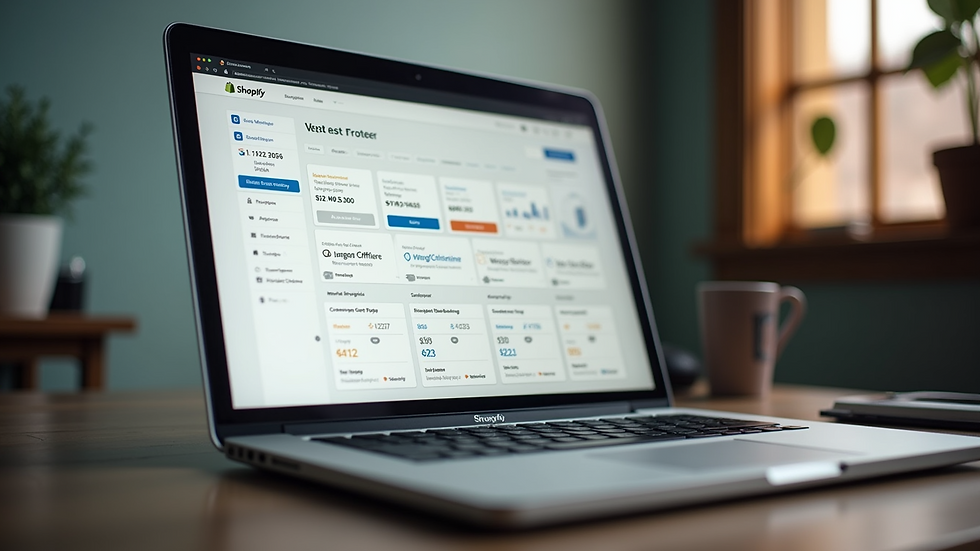How to Correctly Set Up Your E-commerce Website for Dropshipping
- Elita

- Jul 2
- 4 min read
Setting up an e-commerce website for dropshipping can be a great way to start a business with lower upfront costs and less risk. However, knowing how to set up everything correctly is crucial to your success. This blog post will provide small business owners with a comprehensive guide on how to effectively create their dropshipping site, addressing common issues along the way.
Understanding the Basics of Dropshipping
Before diving into the setup process, let’s clarify what dropshipping is. In a dropshipping business model, you sell products without holding any inventory. When a customer purchases from your online store, you place the order with a supplier who then ships the product directly to the customer. This allows you to focus on marketing and sales rather than logistics.

Dropshipping can have many benefits, such as lower overhead costs, a broad product range, and the ability to work from anywhere. However, it also comes with some challenges, which we will address in this blog post.
Choosing the Right E-commerce Platform
One of the first steps in setting up your e-commerce website is selecting a reliable e-commerce platform. Popular options include Shopify, WooCommerce, and BigCommerce. Each platform has its own strengths and weaknesses, so consider factors like ease of use, integration options, and payment gateways.
For beginners, Shopify is often recommended due to its user-friendly interface and plethora of dropshipping integrations. For those with a bit more technical knowledge, WooCommerce with WordPress can offer greater flexibility and control.

Key Features to Look For
Ease of Use: Your platform should be easy to navigate, both for you and your customers.
Integrations: Look for integrations with dropshipping suppliers like Oberlo or Spocket.
Mobile Responsiveness: Ensure the platform automatically adjusts for mobile devices, as a significant amount of shopping is done on smartphones.
Payment Options: Your platform should support various payment methods, making it easier for your customers to complete their purchases.
Finding Reliable Suppliers
Having trustworthy suppliers is vital for your dropshipping success. Poor suppliers can lead to delayed shipments and unhappy customers. Here are some tips for finding reliable partners:
Research: Investigate potential suppliers through online reviews and forums. Websites like AliExpress and SaleHoo can be useful.
Order Samples: Always order a few products yourself to assess quality and shipping times.
Communication: A quick response time is important. Ensure the supplier can communicate effectively.

Building Strong Relationships
Once you have identified potential suppliers, building strong relationships with them can lead to better service and pricing. Don’t hesitate to negotiate terms and clarify shipping times upfront. A good supplier can significantly impact your store's reputation.
Designing Your Store for Maximum Impact
The design of your online store plays a crucial role in converting visitors into customers. Here are essential design tips:
User-Friendly Navigation: Use clear categories and filters to make it easy for customers to find what they want.
High-Quality Images: Use professional images that showcase your products effectively. This is especially important in dropshipping, where products need to stand out.
Compelling Product Descriptions: Write engaging product descriptions that highlight features and benefits.
Clear Calls to Action: Use buttons like "Add to Cart" or "Buy Now" to guide users seamlessly toward purchase.
Implementing Payment Gateways
Setting up payment gateways is essential for processing transactions smoothly. Common payment gateways include PayPal, Stripe, and Square. The key is to choose a gateway that is secure, reliable, and easy for your customers to use.
Security Measures
Implement SSL certificates on your website for encrypting customer data. Most e-commerce platforms provide these certificates; ensure yours is active to build customer trust.
Marketing and Driving Traffic
Once your e-commerce site is up and running, the next step is to drive traffic through various marketing strategies:
SEO: Optimize your website for search engines using keyword research, meta descriptions, and alt tags for images.
Social Media Marketing: Utilize platforms like Facebook and Instagram to reach your audience. Paid ads can also achieve better results.
Email Marketing: Build an email list and engage your customers with newsletters, promotions, and product updates.
Content Marketing: Start a blog related to your niche. High-quality content can attract visitors organically.
By effectively driving traffic, you can increase the chances of converting visitors into buyers.
Troubleshooting Common Issues
Even with a well-planned setup, issues can arise. Here are common problems dropshippers face and their solutions:
Order Fulfillment Issues
Late shipments can tarnish your reputation. Make sure to build buffer times into your shipping estimates. Maintain open communication with suppliers to stay updated on stock levels and fulfillment timelines.
Customer Service Challenges
You might find it challenging to handle customer inquiries. Consider using chatbots or outsourcing your customer service if your volume increases.
Quality Control
Since you won't physically handle the products, quality can be a concern. Test products regularly and solicit feedback from your customers.
Professional Assistance
Setting up an e-commerce website for dropshipping doesn't have to be overwhelming. If you find you don’t have time or specific expertise for your store setup, professional services can help. We offer plans starting at $400 a month and a flat fee of $750 to set up your store.
Schedule a Free Consultation
Take the first step towards building your dropshipping business today! Schedule a free consultation with us to see how we can assist you in setting up your e-commerce store the right way. Together, we can create a successful online business tailored to your needs.
With careful planning and execution, your dropshipping business can thrive. Don’t hesitate to reach out for help, and take advantage of the opportunities this exciting business model offers!



Comments